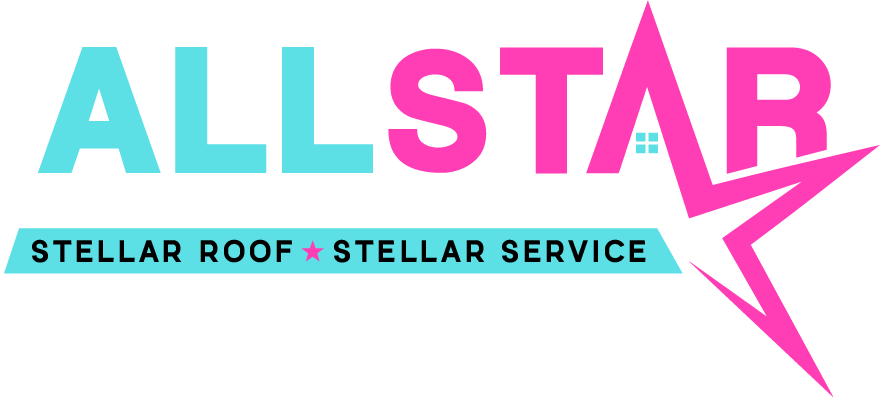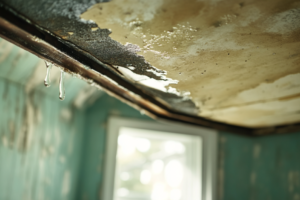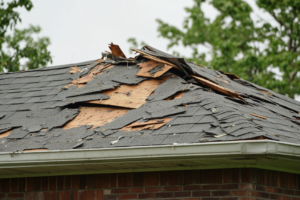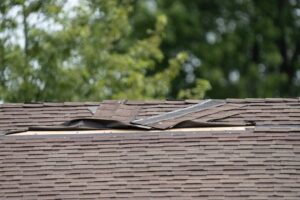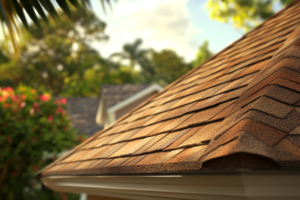A tree falling on your roof is a homeowner’s nightmare. Whether caused by strong winds, a storm, or a weakened tree structure, the impact can lead to significant roof damage, structural issues, and potential safety hazards. Knowing what to do when a tree falls on your roof can help you minimize the damage and take the right steps toward repairs.
If you find yourself in this situation, don’t panic. This guide will walk you through immediate actions, safety precautions, and how to navigate insurance claims and professional repairs.
Immediate Steps to Take After a Tree Falls on Your Roof
1. Ensure Everyone’s Safety
Your first priority should be the safety of your household. A fallen tree can cause structural instability, downed power lines, and potential fire hazards. Here’s what you should do:
✔ Evacuate immediately if the damage is severe or if you notice sagging ceilings, cracked walls, or debris inside your home.
✔ Avoid touching electrical wires if power lines are down. Call your local utility company to report them.
✔ Stay outside until professionals assess the damage.
If you suspect a gas leak, leave the home and call 911 immediately.
2. Call Emergency Services If Needed
Depending on the extent of the damage, you may need assistance from:
✔ Fire department: If there’s a fire risk or structural damage.
✔ Utility companies: If power lines are damaged.
✔ Roofing professionals: To assess and repair roof damage.
The Federal Emergency Management Agency (FEMA) advises homeowners to have an emergency plan in place for natural disasters, including fallen trees.
3. Document the Damage for Insurance Claims
Before any cleanup or repairs, take clear photos and videos of the damage from multiple angles. Capture:
✔ The fallen tree and its impact on the roof.
✔ Damage to shingles, gutters, and nearby structures.
✔ Any interior damage, such as leaks or ceiling cracks.
This documentation is crucial when filing an insurance claim.
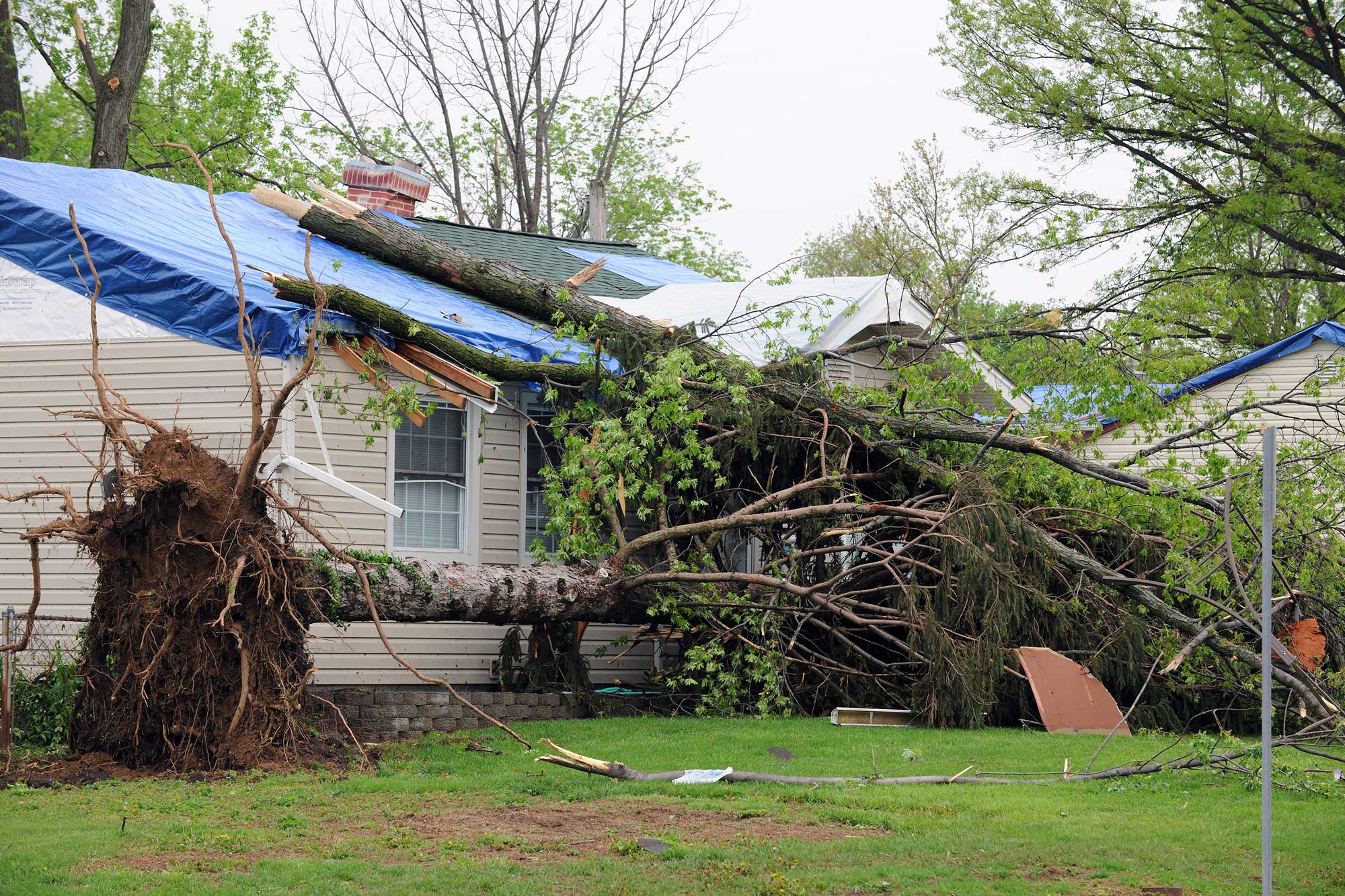
4. Contact Your Insurance Provider
Most homeowners’ insurance policies cover tree-related roof damage, but coverage may depend on the cause of the fall. Call your insurance company to:
✔ Report the incident.
✔ Confirm your coverage details.
✔ Schedule an inspection by an insurance adjuster.
Be prepared to provide photos, a description of the damage, and any reports from emergency responders.
Assessing the Damage: How Bad Is It?
1. Minor Damage (Branch Impact or Partial Collapse)
✔ A few missing shingles or minor dents.
✔ Small branches that can be safely removed.
✔ No leaks or interior damage.
💡 What to do: Schedule a professional roof inspection to ensure there are no underlying structural issues.
2. Moderate Damage (Roof Punctures or Leaks)
✔ Holes in the roof, leading to potential water intrusion.
✔ Damaged shingles, flashing, or underlayment.
✔ Minor structural concerns.
💡 What to do: Cover the damaged area with a tarp and contact a roofing professional for emergency repairs.
3. Severe Damage (Major Roof Collapse or Structural Instability)
✔ Large portions of the roof missing.
✔ Ceiling or wall cracks inside the home.
✔ The house is unsafe for occupancy.
💡 What to do: Evacuate the home and call professionals immediately. A structural engineer may be needed to assess the integrity of the house.
The U.S. Department of Agriculture (USDA) provides helpful resources on identifying tree risks and preventing damage before severe weather occurs.
How to Prevent Further Damage
While waiting for repairs, take these precautionary measures to prevent further harm to your home:
✔ Use a tarp to cover exposed areas and prevent water intrusion.
✔ Clear smaller branches that pose additional hazards (only if it’s safe to do so).
✔ Monitor for leaks or worsening damage inside your home.
Leaving roof damage unaddressed can lead to mold growth, insulation problems, and higher repair costs.
Who Is Responsible for the Fallen Tree?
Determining responsibility for a fallen tree can affect insurance claims and repair costs. Here’s what you need to know:
✔ If the tree was on your property: Your homeowner’s insurance typically covers the damage.
✔ If the tree was from a neighbor’s yard: Their insurance may be responsible if negligence (e.g., an unhealthy tree) is proven.
✔ If the tree fell due to a storm: Insurance companies generally treat this as an “Act of God,” and your own policy would apply.
It’s a good idea to regularly inspect trees around your home and trim weak branches to reduce risks.

Hiring a Professional for Roof Repairs
Once the immediate danger is addressed, it’s time for roof repairs. Choosing the right contractor ensures quality work and prevents future issues.
What to Look for in a Roofing Contractor:
✔ Licensed, insured, and experienced in storm damage repairs.
✔ Provides a written estimate and detailed scope of work.
✔ Works with insurance companies to streamline claims.
At Allstar Restoration Services, we specialize in storm-related roof repairs and will guide you through every step of the process.
How to Prevent Tree Damage in the Future
While storms and accidents are unpredictable, these steps can help reduce the likelihood of a tree falling on your roof:
✔ Regular Tree Maintenance: Trim weak or overhanging branches, especially near the roofline.
✔ Check Tree Health: Look for signs of decay, leaning, or dead limbs.
✔ Secure Outdoor Furniture & Objects: Flying debris during storms can also damage your roof.
✔ Schedule Roof Inspections: Routine check-ups can catch minor issues before they escalate.
Taking proactive measures can save thousands in potential repair costs.
Get a Free Roof Inspection Today
A fallen tree can cause serious damage, but taking the right steps ensures a smoother recovery. At Allstar Restoration Services, we provide expert roof inspections, emergency repairs, and insurance claim assistance.Don’t wait until minor damage becomes a major problem—get a free inspection now and restore your home with confidence.
